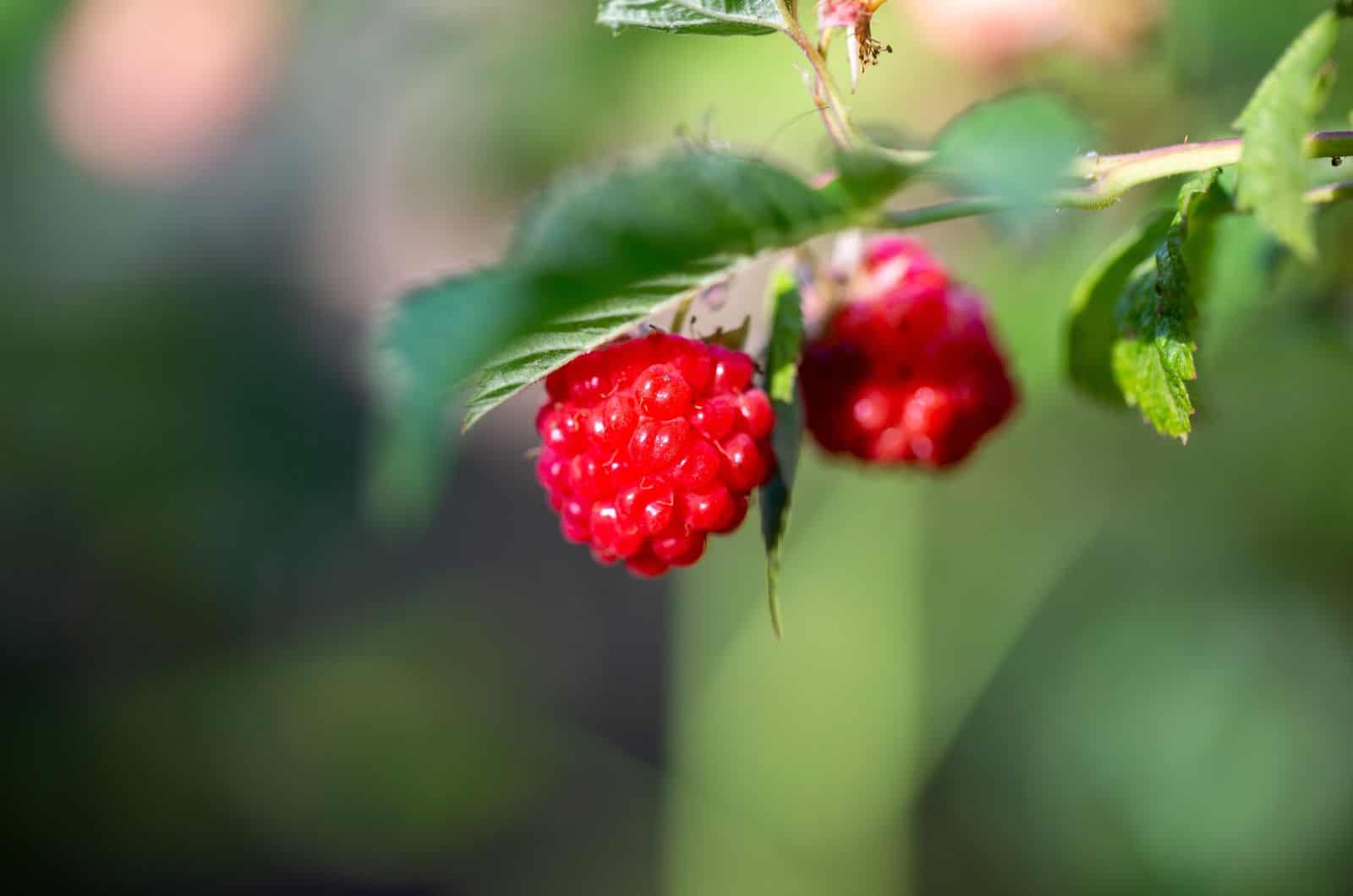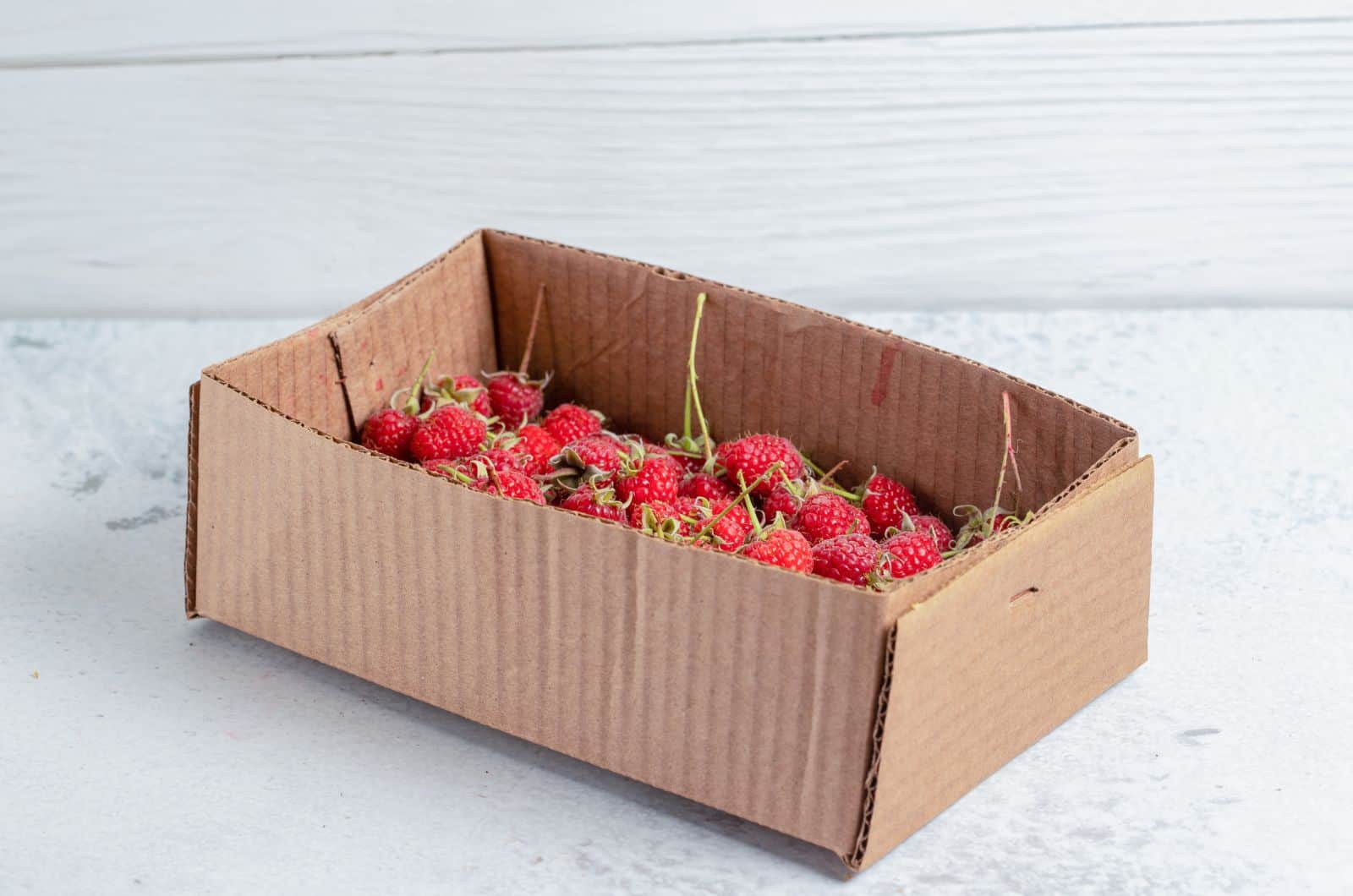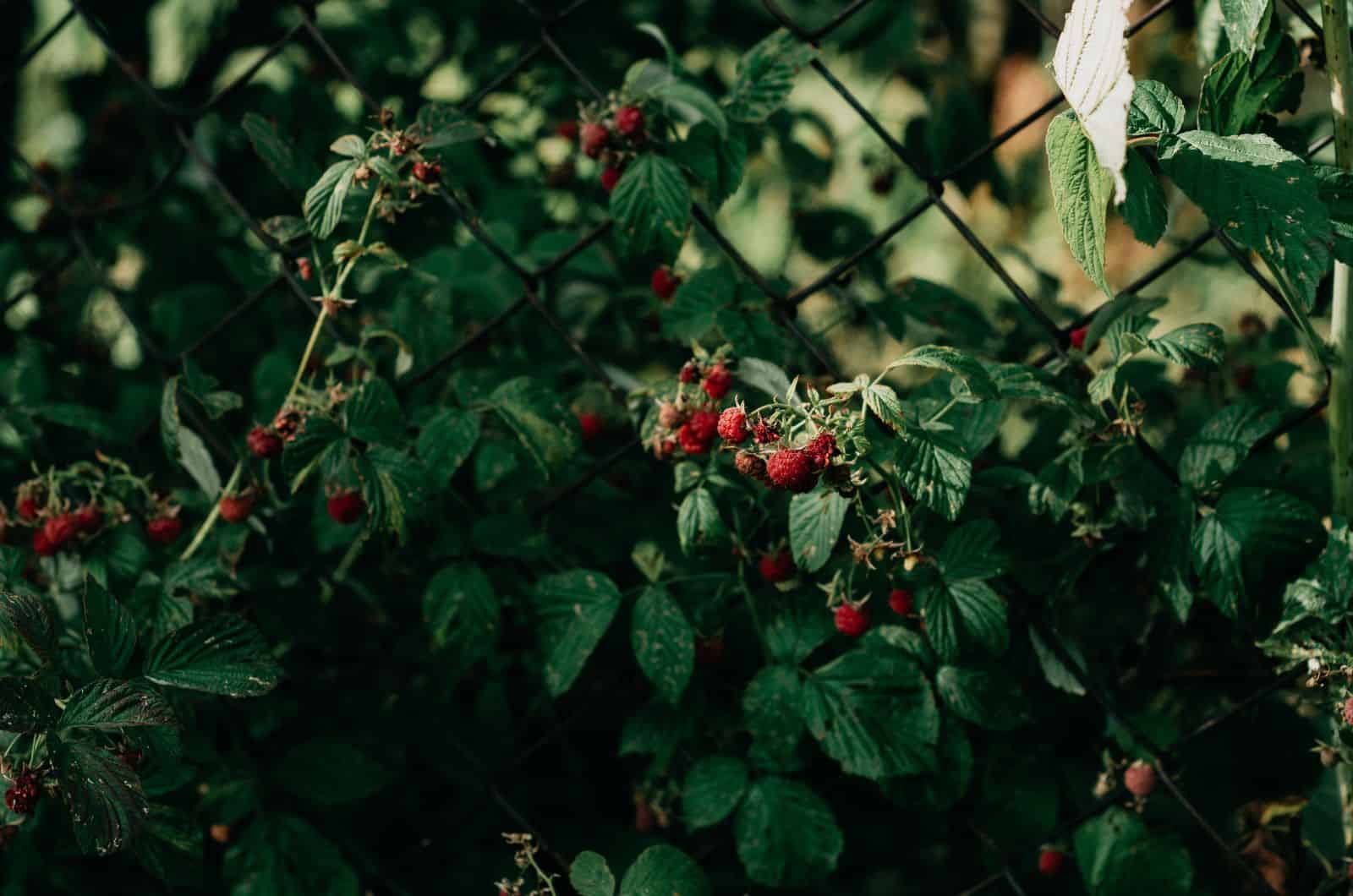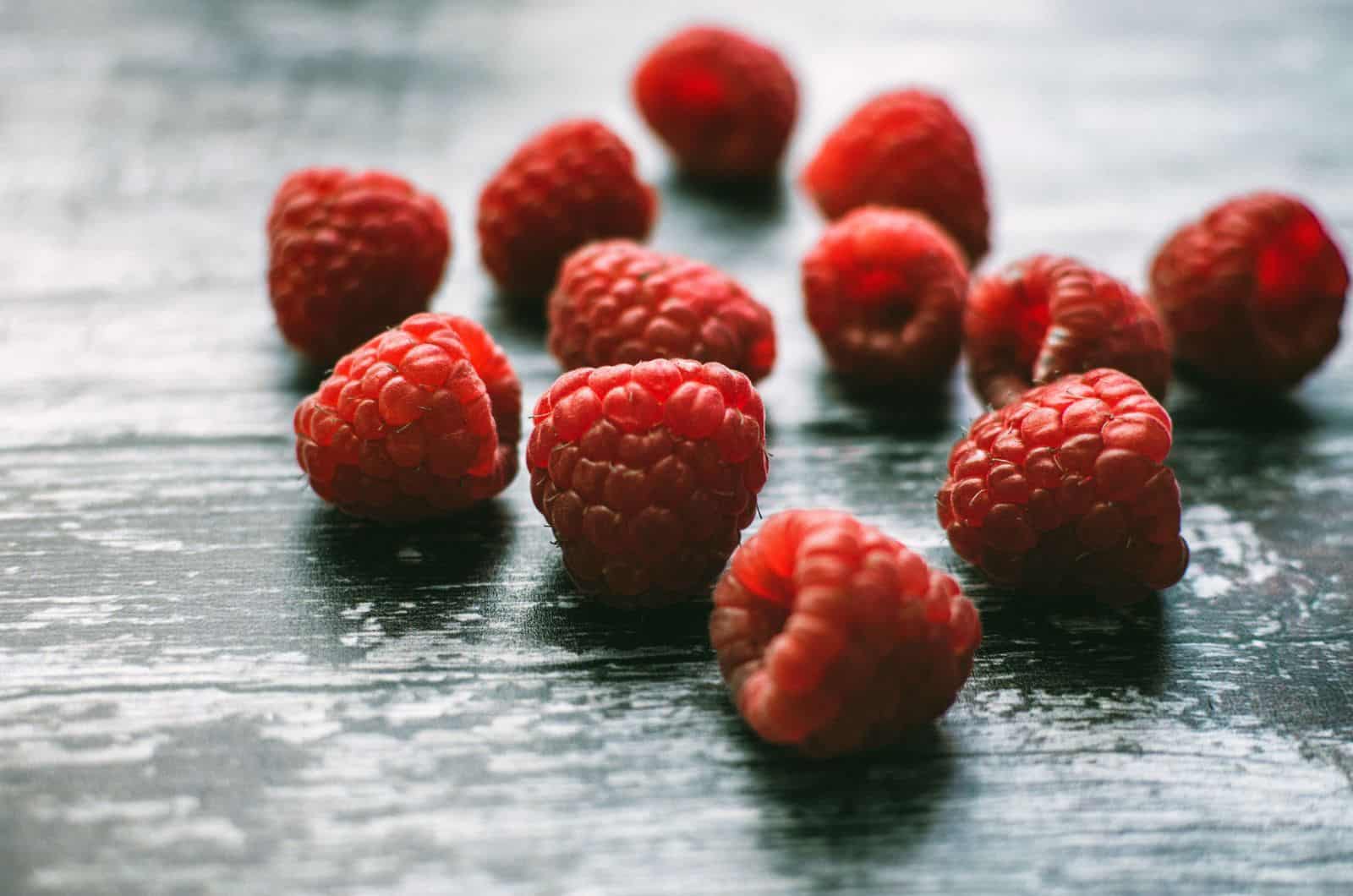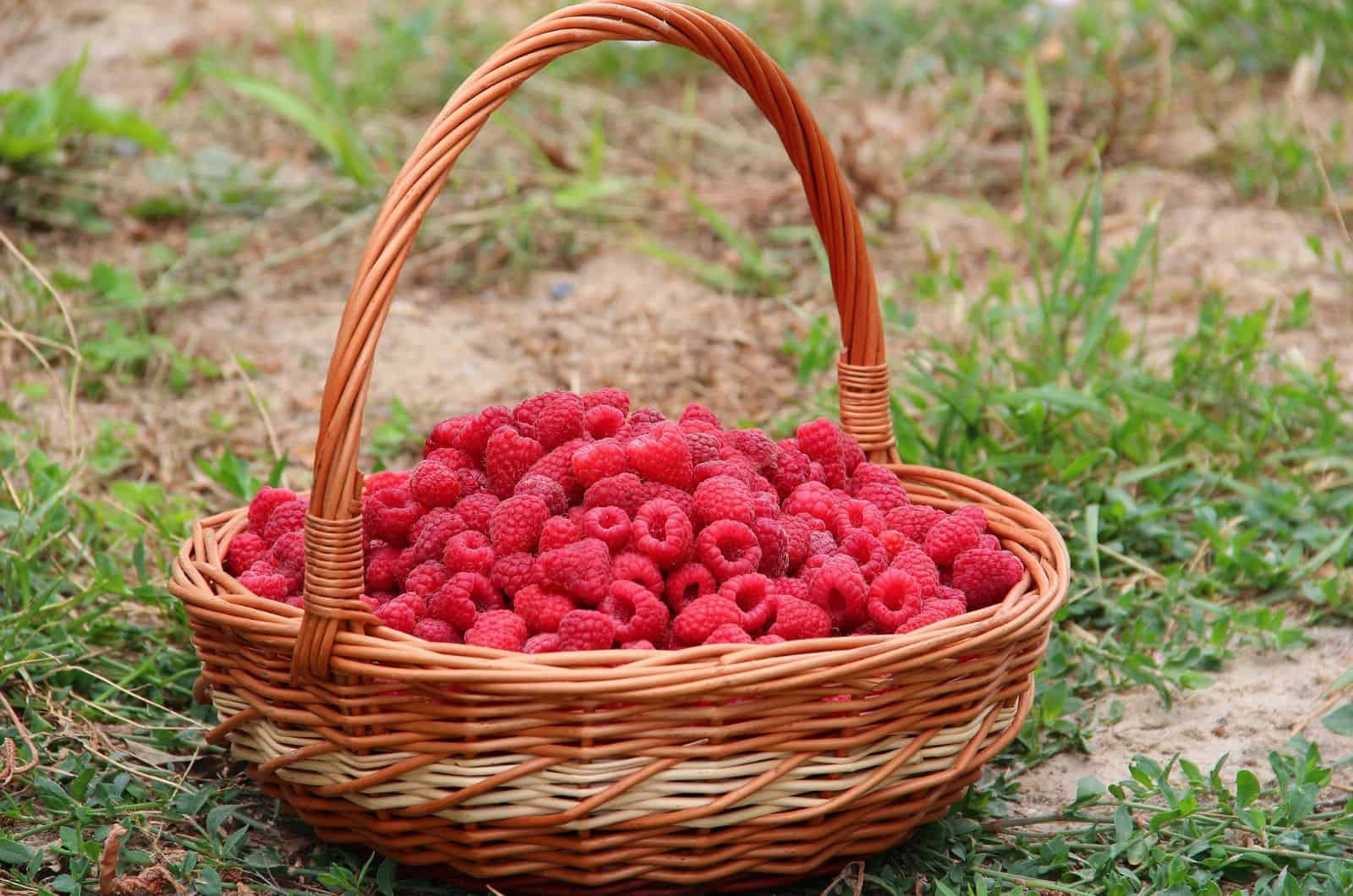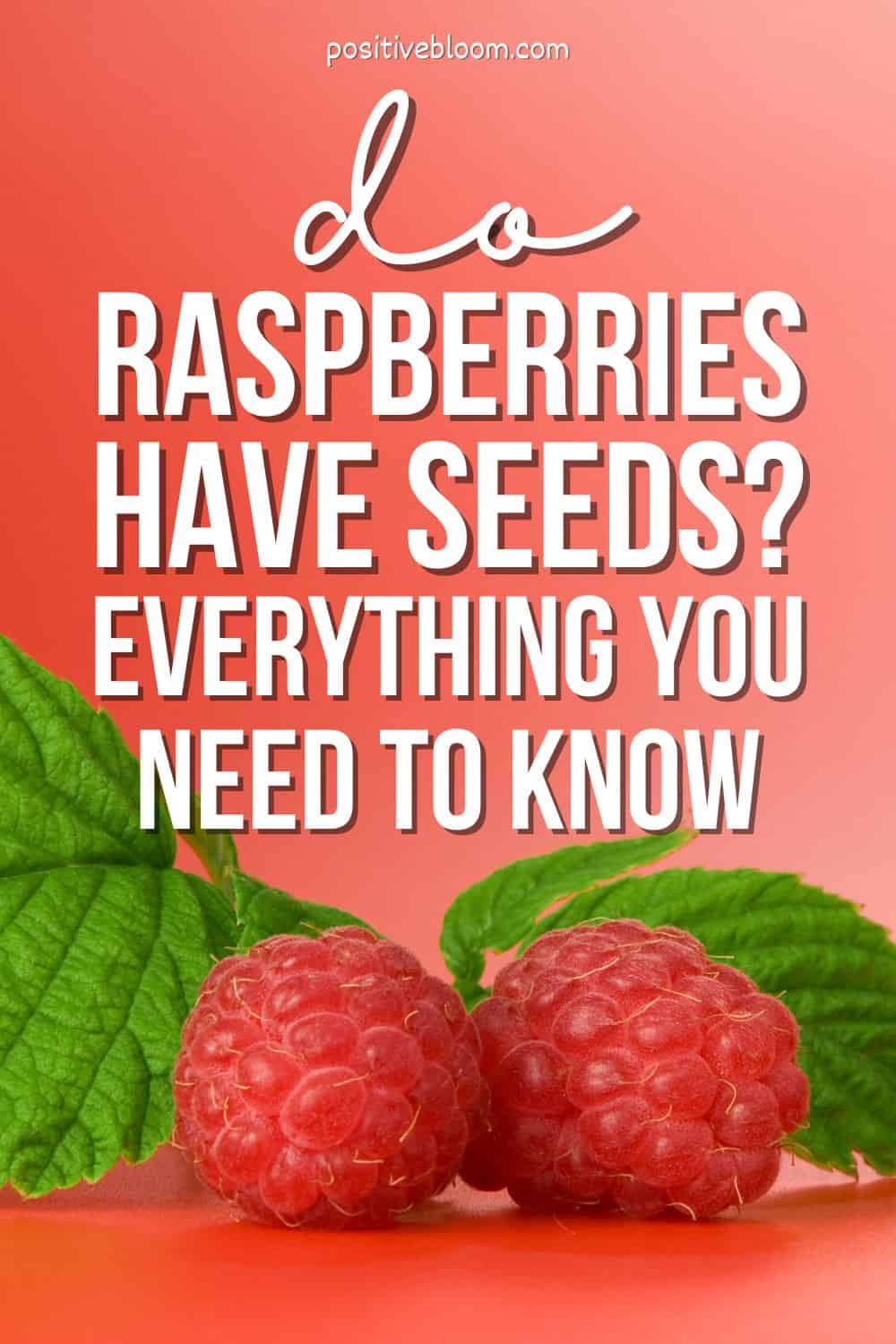We all love adding berries to our oatmeal, smoothies, cakes, and what-not, so why shouldn’t we grow our own blackberries, blueberries, and red or black raspberries?
These drupelets have many health benefits, and they taste amazing. However, have you ever wondered: ”Do raspberries have seeds?” Or is it just me?
Of course, every fruit has seeds, but I have never seen any in my black raspberries. Therefore, I decided to write an article about everything you need to know about these seeds.
Before we go any further, let’s examine the red raspberry plant itself:
| Scientific name: | Rubus idaeus |
| Native habitat: | North America and Asia Minor |
| Growth rate: | Fast grower |
| Size: | 5-6.5 feet |
| Toxicity: | Non-toxic |
Now that you know some basic information about raspberries, it’s time to talk about their seeds and what they have to offer.
We’ll also talk about how to extract seeds from raspberries, their different applications, propagation methods, and a basic care guide.
Finally, as the raspberry is so healthy, we’ll mention some of its benefits, and who knows, perhaps you will make your own raspberry jam this year!
Let’s get started!
Do Raspberries Have Seeds?
Yes, raspberries do have seeds, even though we never pay attention to them. The tiny sections that make raspberries are known as drupelets, and each part contains a seed.
You won’t find the seeds in the middle part of the raspberry fruit, but rather on the outside.
Technically, raspberries aren’t even considered true berries (like strawberries and blackberries) because their seeds are on the outside of their fleshy fruit.
When raspberry ovaries are fertilized, they form tiny, dry fruits that develop on the red fruit surface, and each of these fruits (also called achenes) contains a seed. Raspberries are created by the merging of fertilized ovaries, which is why they are referred to as aggregate fruit.
(Contrary to this, simple fruits are formed from one ovary.)
Some claim that there are seedless varieties, such as the red raspberry, but thankfully that’s not true. The seeds are simply tiny and much smaller than those of other berries, but they are still there.
Even though raspberries belong to the list of fruit vines and not berries, they still have their benefits and a delicious taste, which makes them highly desirable for growers around the world.
How To Extract Raspberry Seeds
In order to do anything with raspberry seeds, we first have to extract them from the drupelet.
There are two methods of extracting raspberry seeds, and you can choose whichever you prefer because both work like a charm.
Only one method keeps your hands clean, however, so we’ll start with that one. Place the raspberry fruit in a mesh colander or sieve and squeeze it with the back of a glass, spoon, or anything else with a smooth surface.
Now you just need to wash off the pulp and let the seeds dry on a kitchen or paper towel.
The following method requires fewer tools, so you might prefer it. Simply separate the raspberry into tiny sections and crush it between your fingers to release the seed.
Run the seeds under water and place them on a paper towel to dry.
Every raspberry has approximately 100 seeds, so you won’t need to use more than one fruit for your own needs.
However, if you enjoy fresh raspberries as much as we do and have forgotten to extract the seeds, you can always buy them and plant more of these delicious fruit-bearing vines.
Raspberry Seeds Health Benefits
Believe it or not, raspberry seeds are actually incredibly healthy. They are an excellent source of fatty acids, antioxidants, and fiber.
They contain the antioxidant anthocyanin (a pigment found in red, purple, and blue fruits and vegetables) that may help reduce the consequences of oxidative stress. This kind of stress is connected to a higher risk of Parkinson’s and Alzheimer’s disease, cataracts, diabetes, heart diseases, and even cancer.
There are two fatty acids that this fruit contains, linoleic (omega-6 fat) and alpha-linoleic acid (omega-3 fat), which improve the health of your heart.
It is an excellent source of fiber, and scientists say that fiber inhibits the risks of high cholesterol and blood sugar, constipation, heart disease, and cancer. Fiber is an excellent food that makes you feel full longer and helps with weight loss.
What To Do With Raspberry Seeds
Raspberry seeds are full of various nutrients, but they aren’t used just as food.
You can use them to make raspberry crackers, jellies, cakes, muffins, tarts, and anything else your sweet tooth would love. However, if you prefer a puree without the seeds, you can simply extract them.
Raspberry seeds are also used to propagate the vine, and that’s what this section is all about.
You can propagate a raspberry from raspberry canes and have mature fruit in the same year. However, seeds are much cheaper (and you can even grow them yourself), and provide a unique opportunity for practicing your nurturing skills.
Propagation
There are two ways to propagate raspberries: from seeds and from canes. This section will examine seed propagation as it has more steps and is actually a way of getting to the canes you plant.
The only difference is that canes already have a year’s worth of growth, and you’ll be able to harvest ripe fruit from them the same year you plant them.
On the other hand, seeds take a while to become established plants you can harvest, and you won’t have any yield the first time. However, once the second year comes around, your home garden will be red with raspberries (or black, depending on which variety you chose), and you’ll have to figure out creative ways of using them (unless you eat them all like we do!).
Sowing Seeds, Soil Preparation, And Planting
The first stage of growing raspberries is not going to the grocery store and getting a pack of raspberries – it’s preparing the soil!
You first need to prepare the seeds for planting. Sow the seeds in a peat pot one inch apart some time in mid-winter, and sprinkle some sand over them until they’re completely covered.
Place the pot somewhere cool with low-light levels and keep the soil moist at all times.
Pro tip: Don’t water the soil – mist it from time to time.
Once the weather gets warm enough (60°F or above), take the seeds outside. In a month to 6 weeks, the seeds will germinate and start growing.
After they grow an inch in height, transplant them to a larger container or the garden. (You can transplant raspberry canes in the early spring as they’re not too sensitive to the cold. Although you should still wait until the temperatures rise a bit).
Soil Preparation
If you wish to transplant the seedlings into the garden straight away, you should prepare the soil. This fruit vine prefers well-draining mediums, so you should grow it in a raised bed to allow the excess water to drain more quickly.
Keep in mind that this fruit loves nutrients, so work some loam-based compost into the soil before planting the seeds. Even though these plants love rich growing substrates, you shouldn’t fertilize the soil right before planting. Add some plant food at least 2-3 weeks prior to planting, and you’re done.
Remember that raspberries love the sun, so don’t plant them in a shady location!
Planting
Now that you’ve prepared everything you need, it’s time to plant your raspberries. Dig a hole (or some rows if you have more canes) deep enough for the roots to spread, and space each cane 1.5 feet apart.
If you’re digging multiple rows, ensure there are at least four feet between them.
Give your canes a thorough soak immediately after transplanting them, and you’re done. (For now!)
As raspberries grow on vines, it would be a great idea to set up trellises to help them grow.
The video below contains many helpful tips about planting, growing, and caring for raspberries:
Caring For The Plant
Once transplanted, your plants will still need care, especially when it comes to watering and fertilizing.
We’ll go through all the needs of raspberries so you know what you should and shouldn’t do, where to plant them, their watering requirements, etc.
Light Requirements
Raspberries need full sun to thrive, which means they need to be exposed to light for at least 6-8 hours every day.
Find a location without any trees that will create shade.
Raspberries are pretty adaptable, and they’ll even grow in shady spots, but they won’t produce much fruit. This vine needs sun to flower and turn those blooms into raspberry fruit once pollinated.
Try and find a place that gets plenty of light in the morning and some shade in the late afternoon to avoid any possible issues and sunburn.
Water And Humidity
Raspberries need plenty of moisture to survive and bear their tasty fruit. However, be careful not to overwater it as it can lead to worse problems.
Give your plant 1-2 inches of water every week, and once it starts ripening, you can increase it to 4 inches.
These vines have shallow roots, so there’s no need to water until 2 feet of the topsoil are moist.
However, if your region gets plenty of precipitation (at least an inch of rain) every 7-10 days, you don’t have to irrigate it.
Finally, if you’ve prepared a raised bed to grow these vines, you should install a drip irrigation system as it works best for these plants.
These plants thrive in moderate humidity levels, so you won’t have to make any amendments whatsoever.
Temperature
Raspberries grow best in temperatures between 70 and 75°F, so what happens if temperatures exceed this?
These plants cannot photosynthesize in high temperatures, which results in poor fruit production and weak plants. However, there are some things you can do to help your plants thrive and keep them safe.
The main thing is to plant them where they’re exposed to direct sunlight in the morning and protected from the scorching afternoon sun.
Raspberries are quite cold-hardy and can endure temperatures as low as 20°F. In fact, they even need some time in the cold in order to produce lots of fruit. If their chilling requirements aren’t met, your yield will be poorer, so make sure that they get at least 33 days of temperatures between 37-50°F.
This may be problematic for some climates, but at least you don’t have to protect them during winter.
Soil And Fertilizer
Raspberries prefer slightly acidic soils with a pH level between 6.5-6.7. They need soil that retains moisture and yet allows it to drain, so sandy, loam options are the best choice.
Using sand in gardening is an excellent way of improving drainage. However, you need to be careful about the amount you add. If the medium is heavy, you should mix equal parts sand and soil.
These plants also prefer fertile mediums, so don’t forget to add some compost and fertilizer every once in a while.
We prefer organic fertilizers like manure, but you can use a well-balanced fertilizer such as triple 10 just the same.
We feed our raspberries once a year in spring and start fertilizing them after the transplant (never before). Make sure to apply fertilizer at least 3-4 inches away from the plant as you don’t want to cause fertilizer burn.
It’s essential to avoid feeding these plants late in the season because they won’t get stronger. On the contrary, the fertilizer will lead to new growth, which will be weak and unable to survive the harsh winter temperatures this plant needs.
Harvesting
The main reason we grow raspberries is for the harvest, so it’s not surprising people want to know more about this subject.
Raspberries take their time and usually need a year and a half to start producing fruit. However, once the second year comes, you can begin harvesting raspberry fruits in large quantities.
The fruit is usually ready for harvest in the summer or early fall, although you can start harvesting it as soon as you notice it has turned its signature color.
Once you pick the fruit, you can eat it fresh, use it to make smoothies, cakes, and muffins, or store it for later use.
Refrigerated raspberries last up to five days, whereas frozen ones can last about a year.
Once you’ve harvested all the fruit and the leaves have started to lose their color, you can cut back the canes to an inch above the ground, cover them with compost, and let them sleep until spring.
Other Applications
Raspberry seeds are commonly used in cosmetics and are a popular ingredient in many exfoliating face and body products.
They are commonly used in soaps to add some texture and can be used to make a hard-pressed seed oil.
Common Questions
There are still some questions about raspberry seeds that require our attention before we can call it a day.
We looked at some of your most frequently asked questions about this fruit and its seeds and answered them in the following section.
Let’s see what you’ve got in store for us!
Can you eat the seeds in raspberries?
Yes, you can eat raspberry seeds as they are filled with nutrients, fatty acids, fiber, and antioxidants.
However, they can get annoying, especially if they get stuck between your teeth, so we feel inclined to remove them. But that’s not the best option because you deprive yourself of the many benefits they have to offer.
What types of berries have seeds?
All berries have seeds; the only difference is where the seeds are located. Some berries have seeds on the inside, such as cranberries and blueberries, and are considered true berries.
You might have wondered whether blueberries have seeds, and now you know that the answer is yes! However, these seeds are tiny and hard to see, so it’s not surprising that we miss them.
On the other hand, strawberries have their seeds on the outside, and if you look inside the fruit, you’ll find nothing, or rather, you won’t find any seeds.
Berries like strawberries, blackberries, and raspberries aren’t considered real berries because they have seeds from many ovaries.
Why do raspberries have seeds?
The main reason raspberries have seeds is for propagation. It is their way of multiplying and surviving.
Scientists debate why the seeds of some berries are located on the outside (as is the case with raspberries), and one of the most believable explanations is easier spreading.
Sometimes they can get entangled in an animal’s fur, and the animal will carry the seeds far away to where it’ll find its new home.
Wrapping Up
Now you know the definitive answer to the question: “Do raspberries have seeds?”, and you also know what to do with them.
You can extract them if you’d like to avoid eating them, but they’re really not that big of a nuisance. In fact, raspberry seeds are incredibly healthy, so it would be a waste to throw them away.
Raspberry seeds aren’t just good for eating; you can use the seeds to grow your own raspberry plant, although it does take time.
We included a short care guide and the best ways of planting and harvesting raspberries so that your yield will increase.
Have fun with these seeds, bake a cake or two, and until next time!
Like this post? Share or pin it for later!

